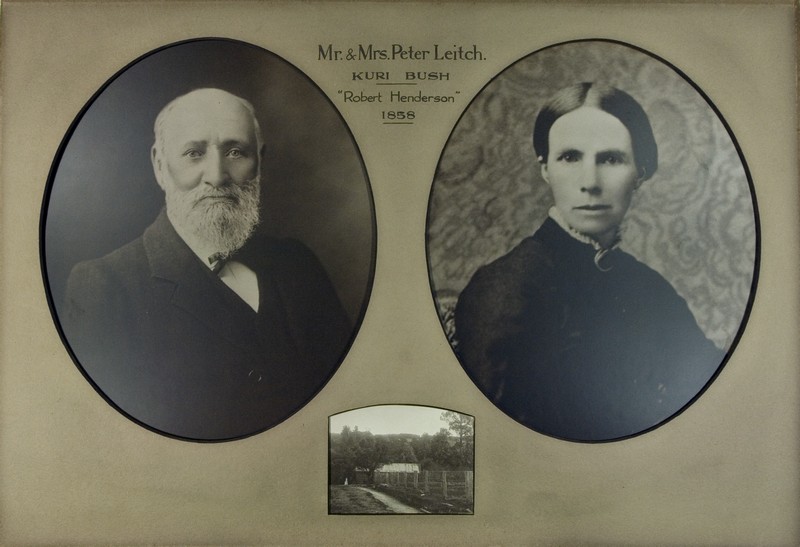Peter and Elizabeth Leitch enjoyed a shipboard romance and a long and successful life as colonists in Otago. Elizabeth was born near Edinburgh in about 1838. Her father, William Adam, had been one of the founding members of the Free Church and took a lively interest in its plan to settle Otago.
However, Adam was clearly a cautious man too. His family made the move to Otago in several groups, beginning with the eldest son, Thomas, who came on the Strathmore in 1856. The second son, William, followed the next year on the Robert Henderson, accompanied by his older sister, Elizabeth. William senior finally came himself in 1858 with his wife and their remaining five children on the Nourmahal.
Elizabeth’s passage to Otago had been a fast one. The Robert Henderson was on her maiden voyage and despite the fact that no one on board, including the captain, had ever been to New Zealand the ship made the journey in record time. Nevertheless, the trip still entailed some three months of travel on the longest sea voyage it was possible to make. There were opportunities for passengers to mix and mingle on deck, especially during the night-time dances that were an important part of life aboard many migrant ships. It was perhaps on these occasions that Elizabeth first became acquainted with 19-year-old Peter Leitch. This highly regarded young man from Loch Awe in Argyll had been educated in Edinburgh. He had worked as a clerk there for several years before making his own decision to emigrate to Otago on the Robert Henderson, paying ₤16 for his passage in steerage.
Once in New Zealand Peter and Elizabeth kept in touch and their shipboard romance blossomed. Neither would have had any difficulty getting work in Otago at this time because there was a high demand for workers, particularly for young women to act as domestic servants. Elizabeth was a skilled needlewoman and this would have enhanced her prospects considerably. We know from a surviving letter that, in late 1858, she was working at ‘Ashburn’, Goodwood, in North Otago and sent money from her wages there to her parents in Dunedin. In May 1859 Peter Leitch secured a job as the first teacher at a brand new school at Otokia – also known as Otakia and Otakaia but then called Moeraki Bush – on the far side of the Taieri Plain.
He and Elizabeth were married the next month at her father’s house in Dunedin – her wedding dress is in the Museum collection. They then moved into the three-room schoolhouse at Otokia that was to be their home as well as Peter’s workplace. Later that year Elizabeth’s family joined them at Otokia, where William Adam senior erected an accommodation house. According to his strict total abstinence principles, this was a temperance establishment serving no liquor. It prospered regardless, especially once gold was discovered inland in 1861 and traffic up the Taieri River increased. The Adam accommodation house was ideally placed to cater for goldfields travellers and became a stopover for the official gold escort.
When the Leitchs moved on to Kuri Bush School in 1878, the Otokia settlers gave Peter a gold watch and chain as a farewell gift. Elizabeth was presented with a Singer sewing machine. Soon after, Peter gave up teaching and began farming at Kuri Bush, on the coast eastwards of Otokia.
Elizabeth died there in 1901, aged 63. They had raised eight daughters and five sons and were highly regarded as stalwart Presbyterian pioneers. Peter survived until 1924 and the last of the Leitch children died in 1962. The local community then erected the Leitch Memorial Hall at Taieri Mouth on the Kuri Bush side of the Taieri River to commemorate the family’s long association with the district.

Peter and Elizabeth Leitch (née Adam)